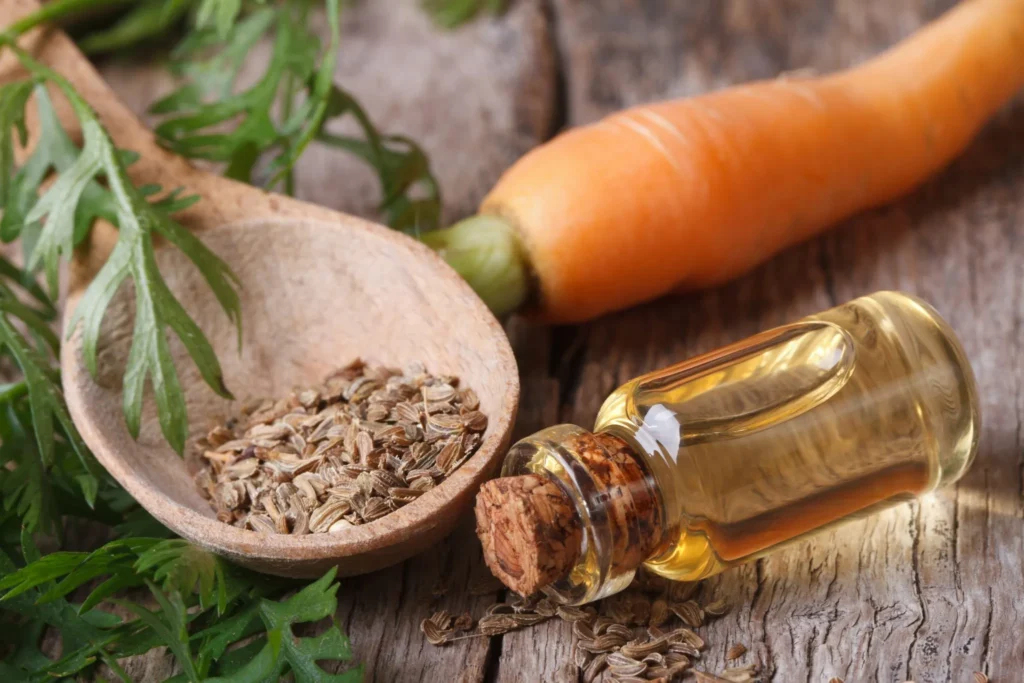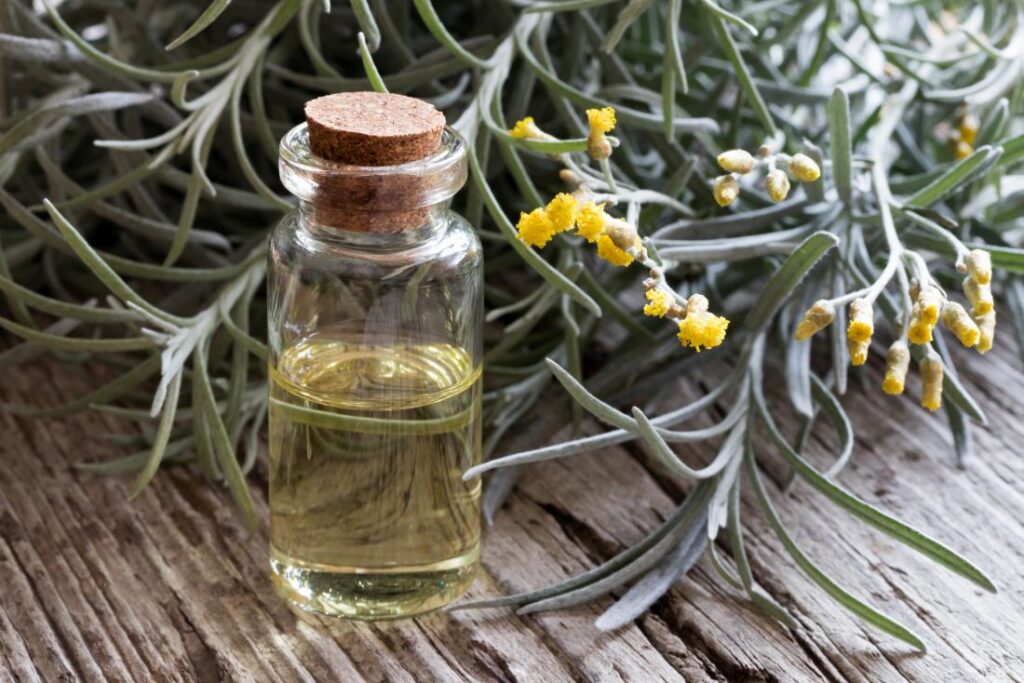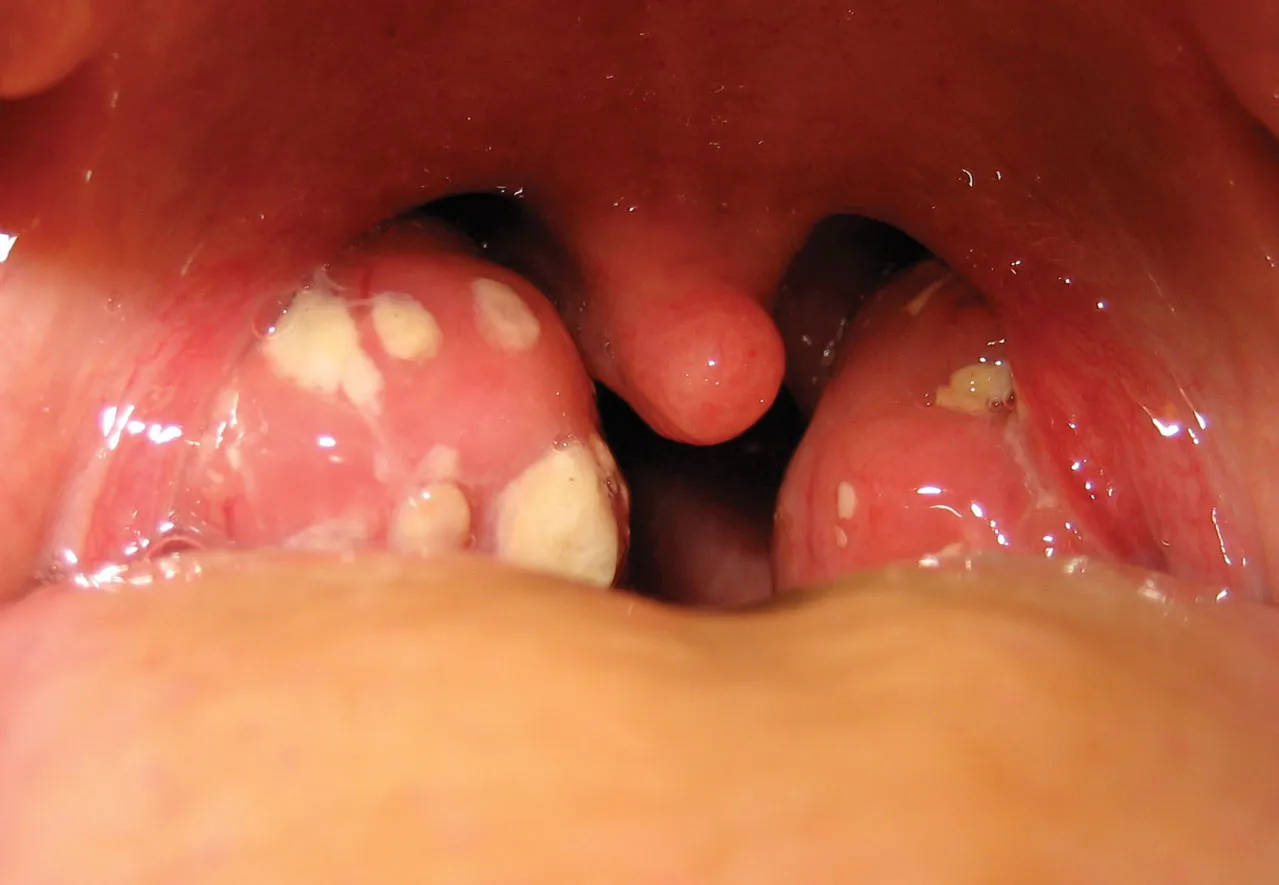Excessive exposure to the sun can damage your skin, and so does the chemical-infused sunblock.
However, you can rely on some natural ingredients such as essential oils for sun-damaged skin to protect yourself from the harmful effects of the UV ray.
The ultraviolet or UV ray of the sun has damaging consequences on your skin. [1]
Researchers have confirmed that sun damage is the primary cause of many skin problems such as dark spots, dry skin, sagging, uneven skin tone, sunburn, wrinkles, and 80% of premature aging. [1]
Essential oils may be effective remedies for sun-damaged skin. Some of them have proven beneficial effects on the skin. [2]
In this article, you will learn about the efficacy and method of using essential oils for sun-damaged skin. Plus you’ll get to know the types of skin disorders that may be caused by sun damage.
Why Use Essential Oils for Sun Damaged Skin?
Essential oils are age-old remedies for various skin problems. The therapeutic oils are essences of different plants and herbs. It is evident that people in ancient times have used essential oils for some skin disorders.
There are three-fold solutions to sun-damaged skin:
- Treating the skin inflammations,
- Moisturizing the dry skin, and
- Fading sun or dark spots.
Using essential oils may take care of all these problems and regenerate your skin inside out. [7]
The oils contain potent anti-inflammatory, cicatrizing, analgesic, and soothing properties. These components may heal your sun-damaged skin.
Essential oils repair your sun-damaged skin in the following manners: [8]
- Calm the pain, irritations, itchiness, and redness of the inflamed skin.
- Reduce the swellings and blisters.
- Renew the skin to lower discolorations.
- Have anti-tumor and anti-cancer activities.
- Create a natural defensive shield against UV rays.
- Prevent DNA degradation inside the skin cells.
- Boost the regeneration of healthy skin.
- Moisturize the skin and improve its elasticity of the skin.
6 Essential Oils For Sun Damaged Skin
1. Lavender Essential Oil
The soothing lavender essential oil comes from the lavender blossoms. This aromatic oil is a generous source of anti-inflammatory, analgesic, and calming properties.
The adaptogenic compound in the herbal oil has a cooling effect on the red, inflamed skin. Lavender oil is very mild and safe for topical use on the skin. The oil quickly penetrates deep into the skin and regenerates the cells. [9]
How to use lavender oil for sun-damaged skin:
You can mix 1 cup of colloidal oatmeal with your bathwater. Then add 8-10 drops of lavender oil to the water and soak for 20 minutes. The treatment will relieve and soothe the pain of sunburned or damaged skin.
READ MORE: 11 Health Benefits of Lavender Oil That You Should Know
2. Carrot Seed Essential Oil
Carrot seed oil comes from the seeds of the carrot plant or Daucus carota. Carrot seed oil is a rich source of vitamin A and carotene. These are beneficial nutrients for your sun-damaged skin. The oil is a skin-protecting agent in the skincare industry.
Carrot seed oil is a great moisturizer for nourishing your sun-damaged dry skin. Some researchers have confirmed that the oil has cancer-fighting qualities as well.
The carrot seed oil has carminative, antiseptic, and anti-inflammatory properties. Thus, it can reduce redness and discolorations of the skin. [10]
A simple method of using carrot seed essential oil for sun-damaged skin:
You can mix 2 drops of carrot seed oil with 1 tablespoon of aloe vera gel to form a soothing gel. Apply this cooling gel on the sun-damaged skin thrice daily to heal your skin.
READ MORE: 19 Uses of Grape Seed Oil for Skin + How to Use
3. Ylang Ylang Oil
Ylang Ylang essential oil is steam distilled from the aromatic Cananga odorata flowers. The Indonesian term Ylang Ylang means flower of flowers. It is because of the sweet floral aroma of the essential oil.
The high antioxidant and anti-inflammatory properties of aromatic oil may ensure healthy skin. [11]
Ylang-ylang oil regenerates the skin tissues and improves the elasticity of your skin. Thus the oil may prevent fine lines, premature aging, and skin sagging caused by sun damage. The unique quality of ylang-ylang oil is its ability to fight melanogenesis in your skin.
Learn how you may use ylang ylang oil for treating sun-damaged skin:
Dilute 2-4 drops of ylang-ylang oil with 1 tablespoon of your favorite carrier oil. Then, massage it onto your sun-damaged skin.
4. Myrrh Essential Oil
Myrrh oil comes from the aromatic resin of the Commiphora tree. The plant grows as a thorny shrub in the Middle East, the Mediterranean region, and Africa.
Since ancient times myrrh oil is famous for its healing properties and woody smell. The fascinating fact is that the Egyptians used to apply myrrh oil as a natural sunscreen.
Myrrh oil is rich in anti-inflammatory, antioxidants, cicatrizant, sesquiterpenes, and terpenoids [12]. These are nourishing compounds for your dry, itchy, red, and scaly sun-damaged skin.
How to use myrrh essential oil for sun-damaged skin:
You can add 3 drops of myrrh oil, 1 drop of peppermint oil to 1 tablespoon of coconut oil. Apply the oil blend to your sun-damaged skin for a rejuvenating effect.
READ MORE: 11 Amazing Health Benefits of Myrrh Oil (Backed by Scientific Evidence)
5. Helichrysum Essential Oil
Helichrysum essential oil comes from the steam distillation of the fragrant Helichrysum flower. This flower grows in several European countries.
The production of the flower is not so extensive. Hence, Helichrysum essential oil is a costly and rare essential oil.
Helichrysum oil has anti-inflammatory, antiseptic, cytophylactic, cicatrizant, and anti-microbial properties.
You already know that cicatrisant compounds may help in skin regrowth. The cytophylactic chemical ingredients protect your skin cells from other harmful organisms. [13]
Hence, the essential oil has a positive effect on your dark spots and blemishes. The oil may regulate your blood flow in a balanced manner to the damaged or affected skin.
Apply a few drops of helichrysum oil to your sunburned skin on a regular basis.
6. Frankincense Essential Oil
Frankincense oil is steam distilled from the resin of the frankincense tree. The herbal oil is famous for some skin disorders such as stretch marks, dark spots, sunburn, etc.
Frankincense oil is a potent remedy for the pain and irritations of sunburned skin. Its active antioxidants and anti-inflammatory properties can hydrate and moisturize your damaged skin. [14]
Learn how you may use frankincense essential oil for sun-damaged skin:
You can add frankincense and peppermint oil 2 drops each to 2 ounces of pure water. Now pour the blend into a spray bottle and spray it on the sun-damaged skin for quick relief. Repeat the treatment daily for regaining the luster of your skin.
READ MORE: 12 Health Benefits and Uses of Frankincense Oil to Know About
Damaging Effects of the Sun on the Skin
Here are the different harmful effects of solar UV rays on your skin.
Sunburn
Your sun-kissed skin may wear a lovely golden tan. But the solar effects are not only skin-deep. Sun’s burning rays can damage the DNA of your skin cells.
That’s why sunburn is a crucial health problem in the USA. More than 1/3 of adults are suffering from various skin disorders.
Prolonged exposure to the sun may leave you hot, red, and irritated. There are three wavelengths of solar UV. These are UVA, UVB, and UVC.
Both UVA and UVB are responsible for penetrating your skin. They complicate or alter the internal buildings of the skin cells. Thus you may experience wrinkles, premature aging, skin cancer, and even melanoma. [3]
Some of the common signs of sunburn are:
- red and sensitive skin,
- swellings or blisters,
- itchiness,
- skin peeling off,
- nausea,
- headache,
- fatigue,
- feverish,
READ MORE: 5 Best Essential Oils for Alcoholism Addiction Recovery
Dry Skin
The scorching heat of the sun can dehydrate your skin and body in no time. The parched-up surface may look like rough patches.
Drink plenty of water and other liquids to avoid complications. Moreover, you should moisturize your skin with good lotion. [4]
Wrinkles
The solar UV rays affect the collagen and elastin beneath your skin. These two are essential proteins that help your skin look firm, smooth, and young. The UV damaged skin forms wrinkles at an early stage of life. [5]
Sun or Age Spots
Your skin boosts the production of melanin chemicals once it’s overexposed to the sun. It’s the natural defense mechanism of the skin to protect itself from the UV rays. But, overproduction of melanin may result in the sun (solar lentigines) or dark spots. [6]
Actinic Keratosis (AK)
Actinic Keratosis or solar keratoses are crusty and scaly skin patches caused by severe sun damage. According to research, 10% of actinic keratosis patients may develop skin cancer. [5]
READ MORE: How to Use Aloe Vera for Gastritis, Ulcer, and Stomach Infections
When to See Your Dermatologist
Sun-damaged skin isn’t deadly most of the time. But if your essential oil treatment doesn’t work, you should consult a dermatologist.
Besides, if you see any unusual spots or changes in your skin pigmentation or texture, you must see a doctor.
Bottom Line
Apart from using essential oils for sun-damaged skin, it’s important that you form certain good habits to address your skin problems. Hydration of your body and skin is of utmost importance. Drink plenty of water on a regular basis. [15]
You should find the right skincare products for your skin that are not harsh and full of toxic chemicals. Moisturize your skin with a mild lotion.
Add fresh fruits and vegetables that are high in antioxidants and vitamin C and E to your diet. These foods will improve the texture and elasticity of your skin.
A regular 30 minutes exercise can boost the blood circulation in your body and help you tone your skin.
READ NEXT: 5 Best Essential Oils for Schizophrenia Management






